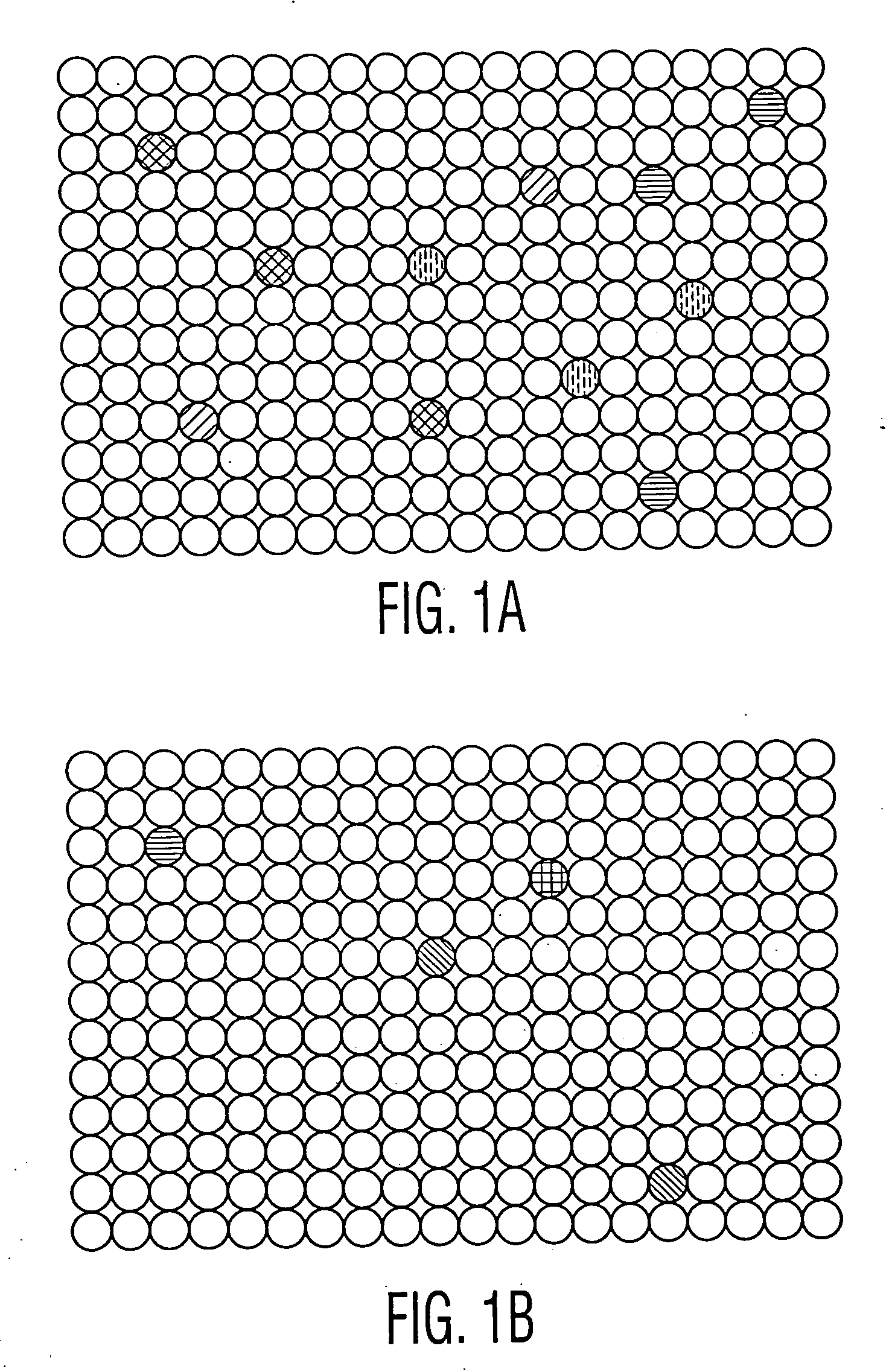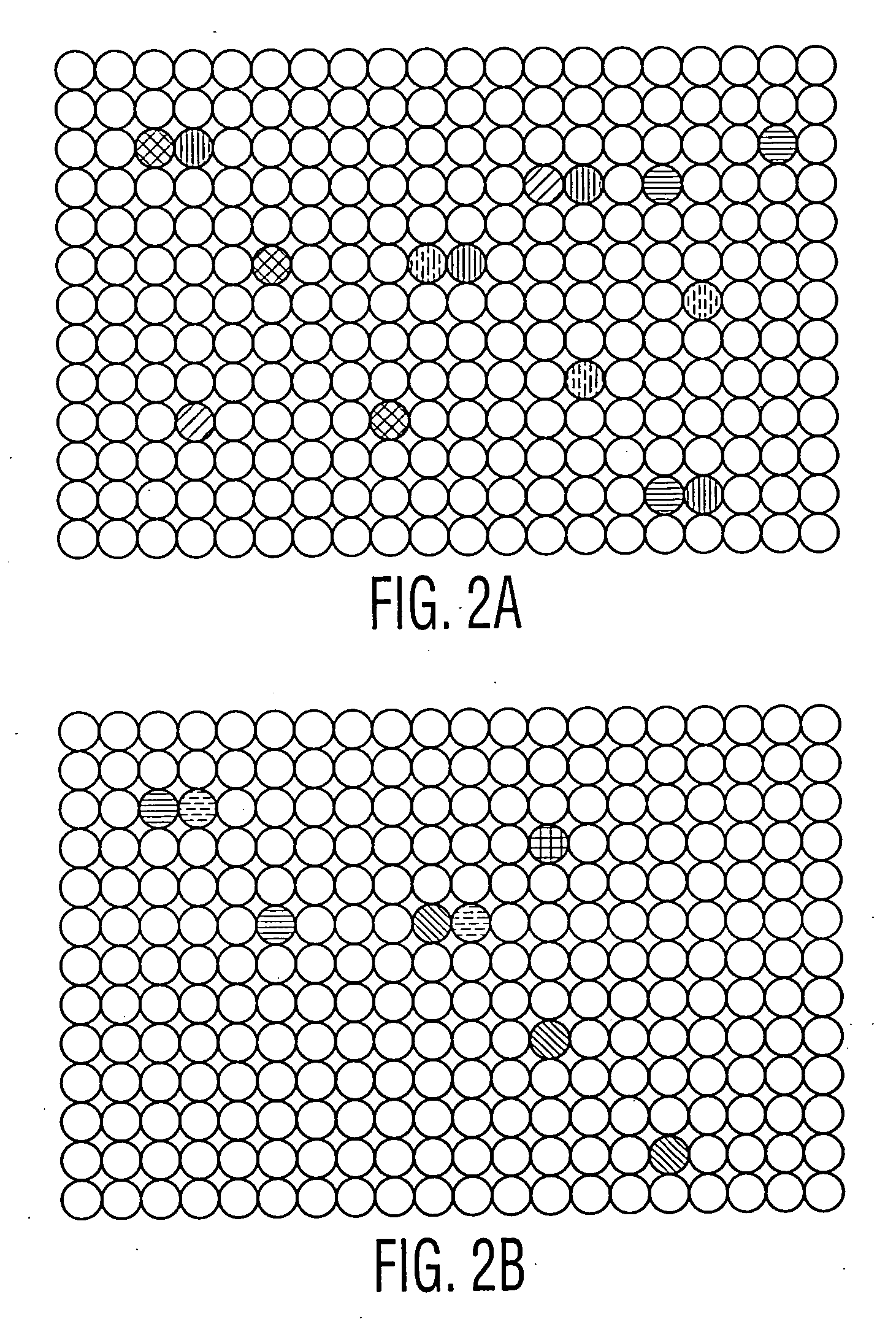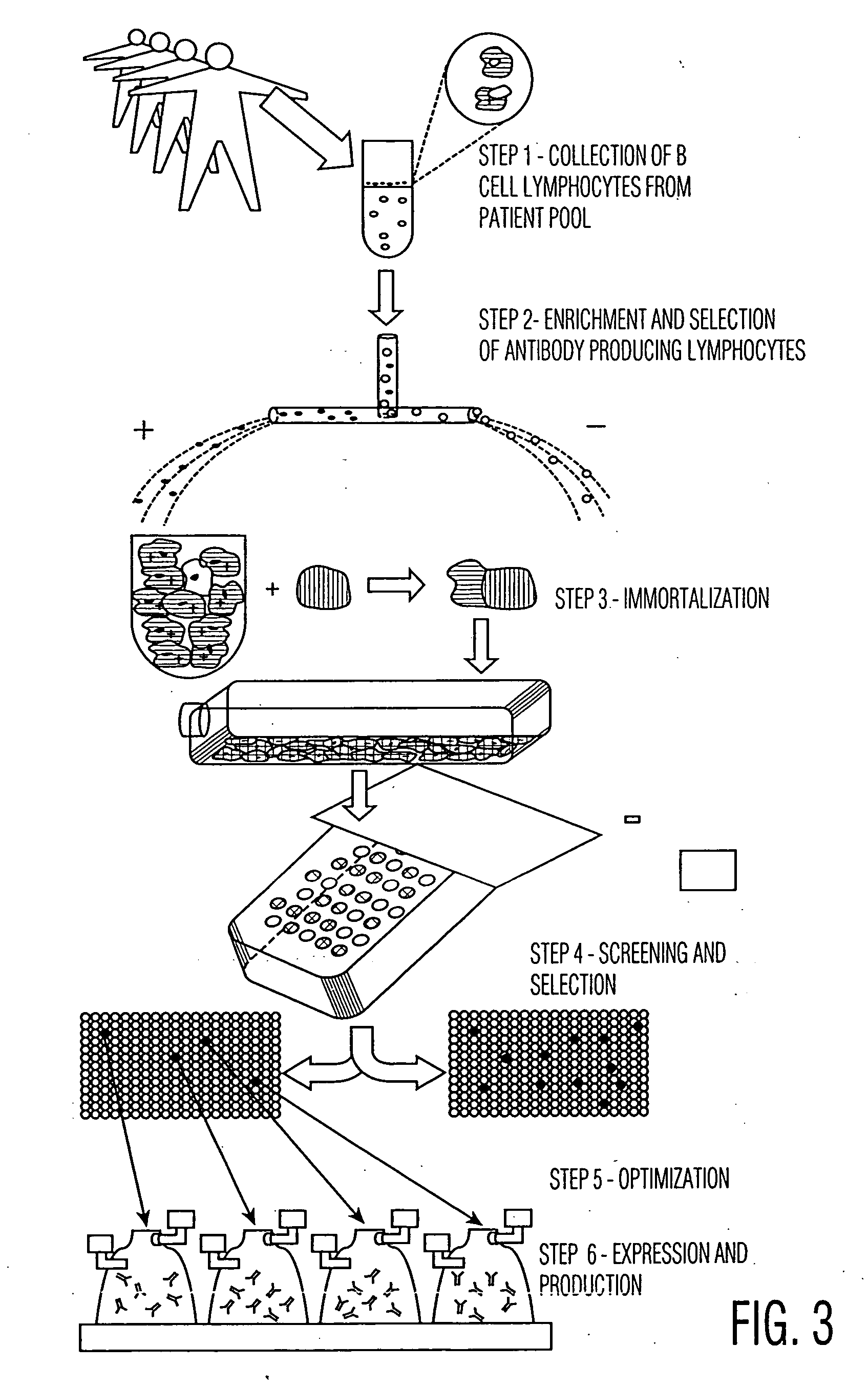Screening antibodies using an optical fiber array device capable of simultaneously performing multiple functional assays
a technology of optical fiber array and antibodies, which is applied in the field of monoclonal antibodies, can solve the problems of false negatives, antibody binding by only a few antibodies may fail to initiate a recognizable change in the cell, and achieve the effects of increasing the number of assays, rapid, and high throughpu
- Summary
- Abstract
- Description
- Claims
- Application Information
AI Technical Summary
Benefits of technology
Problems solved by technology
Method used
Image
Examples
example i
Screening with One Cell Type
[0058] After generating a series of hybridoma cell lines, they are plated into 96 well microtiter plates, with each well likely to contain only one hybridoma cell (following a limiting dilution of hybridoma cells). In the alternative, it is possible to perform only a partial limit dilution, or even no dilution, so that there is likely to be more than one hybridoma cells in each microtiter plate well. The methods described herein can still isolate the wells with reactive antibodies, and the hybridomas from such wells can then be isolated and further limit diluted and screened to find the candidates of interest.
[0059] An embodiment of the optical fiber device having 96 arrays, each of which aligns with one well in the microtiter plate, is employed for screening. The hybridoma cells were generated either by: (i) immunizing mice with tumor cells and then performing a conventional fusion, following collection of lymphocytes from their spleens, or (ii) fusing...
example ii
Screening with Two Cell Types
[0063] Hybridomas are generated and plated onto series of 96 well microtiter plates as described in Example I. In this case, however, two cell lines are adsorbed onto two different sets of color coded microbeads: (i) the same tumor cell line which was used to immunize the mice (or which the patients were exposed to) (ii) a non-tumor cell line, which is preferably the non-mutated counterpart of the tumor cell line. The two different sets of microbeads are separately encoded with a color or fluorescence marker. As described in Example I, the cells on each set of microbeads are then treated so as to report the results from one of several different assays, which results can be monitored by a fluorescent microscope following laser excitation. One or more of the assays is for cytotoxicity. The microbeads are then adsorbed into the wells in the fiber wells in the device.
[0064] The ends of the fibers are now placed into the microtiter plate wells, and allowed ...
example iii
Procedures Following Isolation of Desired Antibody-Producing Cells
[0066] Using the techniques in the examples and otherwise described herein, simultaneous assaying and recording of a number of properties of the antibodies within the 96 microtiter plate wells is provided. The cells in the wells which are determined to contain antibodies best suited for therapy are then extracted from the well, grown, subcloned and humanized or affinity matured, or otherwise optimized (if desired). Fully human hybridomas derived from human lymphocytes may not need any further manipulation, except perhaps subcloning to find high expressing, stable cell lines suitable for production. The same techniques described in Examples 1 and 2 may then be used on the subcloned, humanized or optimized cell lines to screen for suitable antibody-producing cell lines, produced following such steps. These subsequent screenings can also be performed in a high throughput manner, with a number of functional assays, and o...
PUM
| Property | Measurement | Unit |
|---|---|---|
| Fluorescence | aaaaa | aaaaa |
Abstract
Description
Claims
Application Information
 Login to View More
Login to View More - R&D
- Intellectual Property
- Life Sciences
- Materials
- Tech Scout
- Unparalleled Data Quality
- Higher Quality Content
- 60% Fewer Hallucinations
Browse by: Latest US Patents, China's latest patents, Technical Efficacy Thesaurus, Application Domain, Technology Topic, Popular Technical Reports.
© 2025 PatSnap. All rights reserved.Legal|Privacy policy|Modern Slavery Act Transparency Statement|Sitemap|About US| Contact US: help@patsnap.com



